Four young lovers flee into an enchanted forest, a group of amateur actors rehearse a play, and fairies meddle in the affairs of mortals – welcome to Shakespeare’s most beloved comedy, where reality and dreams intertwine under the light of a midsummer moon.
Quick Facts
- First performed: c. 1595-1596, likely at the wedding of Elizabeth Carey
- Published: 1600 in the First Quarto
- Setting: Athens and nearby woodland
- Runtime: About 2 hours and 40 minutes
- Structure: 5 acts, multiple interweaving plots
- Notable adaptations: Benjamin Britten’s 1960 opera, Peter Brook’s revolutionary 1970 production, Julie Taymor’s 2014 ethereal staging
Just want to read the play?
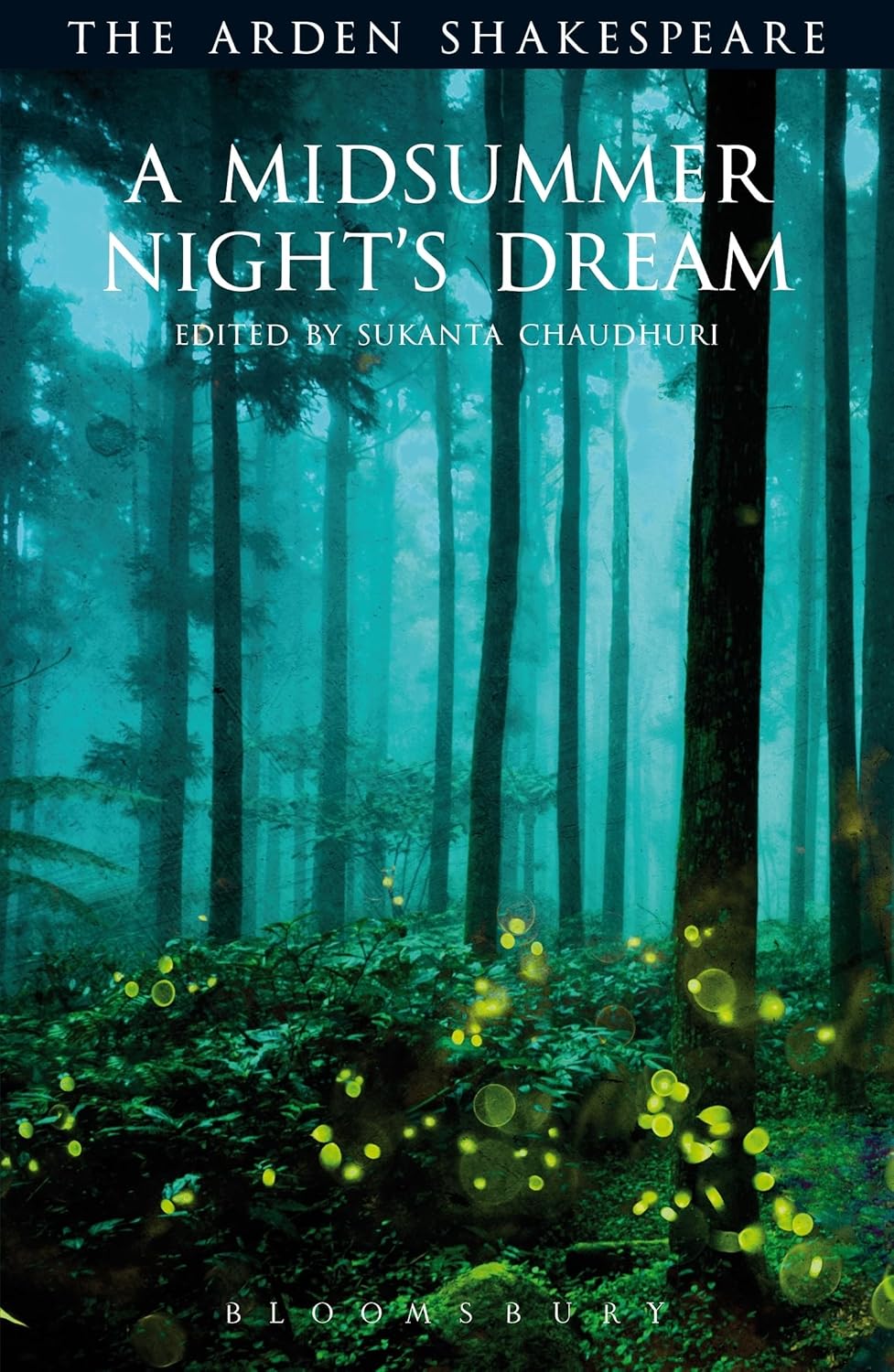
The Arden Edition edited by Sukanta Chaudhuri
Contains excellent annotations and an informative opening essay on the play’s history and context.
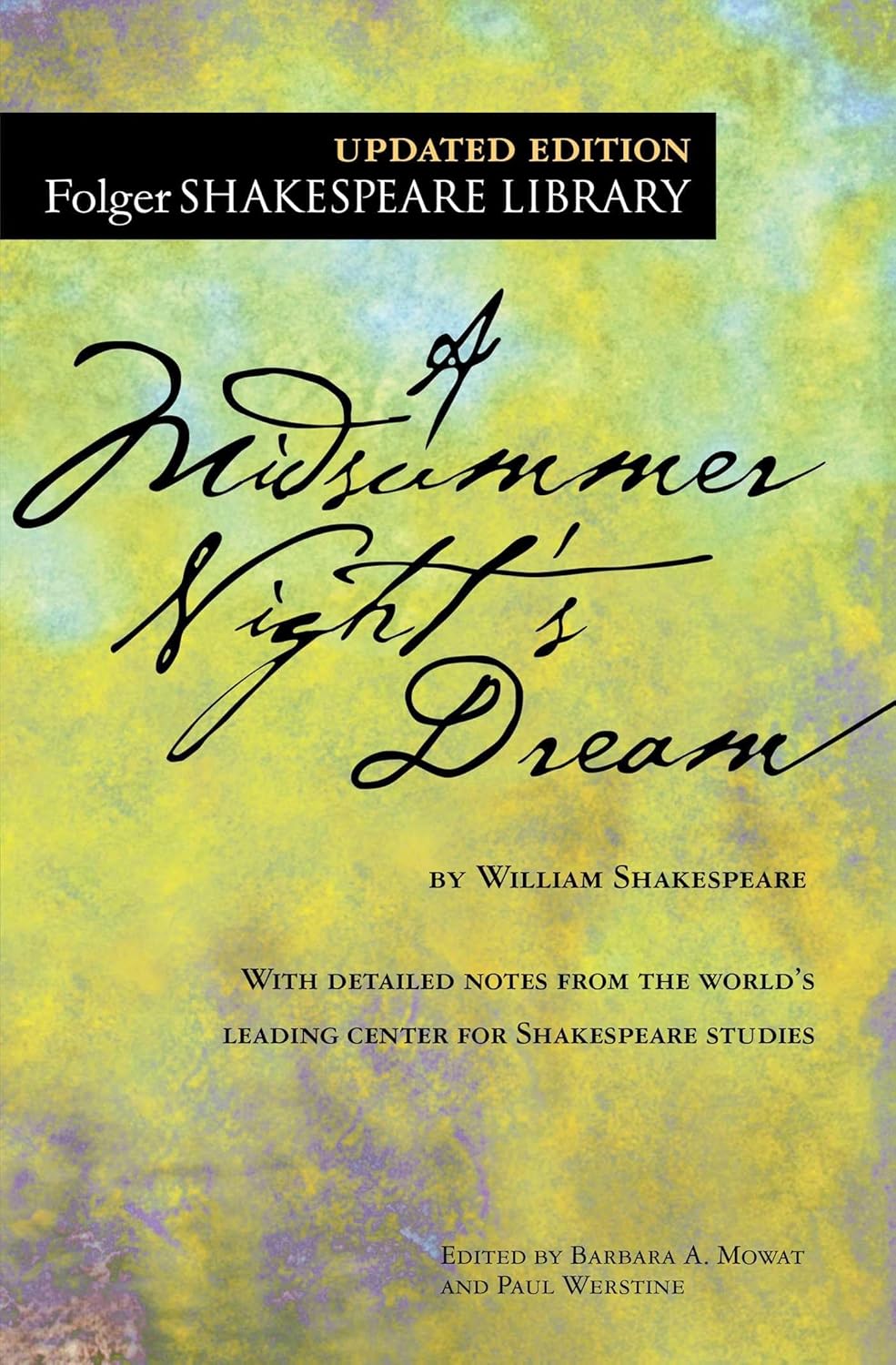
The Folger Edition
Contains explanatory notes, scene-by-scene synopses, approach to Shakespeare’s language etc.
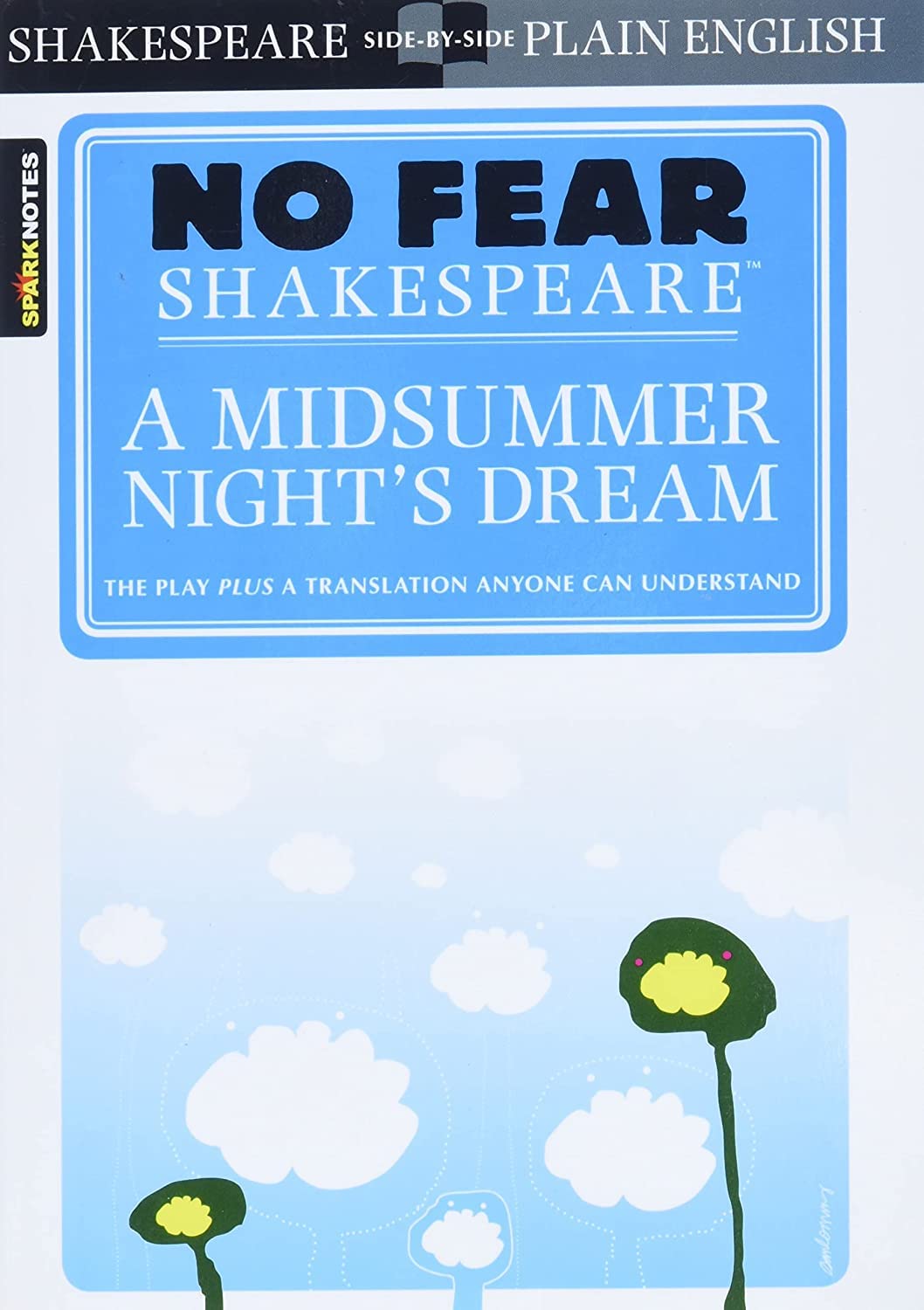
No Fear Shakespeare Edition
One page original, one page modern translation. Great if you’re new to Elizabethan English.

Globe Theatre production on DVD
Stars Michelle Terry as Titania/Hippolyta and Pearce Quigley as Bottom, directed by Dominic Dromgoole in 2013.
Free version? Try the Folger Library online version: https://www.folger.edu/explore/shakespeares-works/a-midsummer-nights-dream/read/
Historical Context
Written during the height of the English Renaissance, “A Midsummer Night’s Dream” emerged when Elizabeth I’s court was fascinated by pageantry, masques, and fairy mythology. The play cleverly combines elements of English folklore (Puck/Robin Goodfellow), classical mythology (Theseus and Hippolyta), and contemporary Tudor wedding celebrations.
The original performance likely coincided with an aristocratic wedding, making its exploration of marriage, love, and celebration particularly resonant. Shakespeare wrote this during his early mature period, when he was developing his distinct comedic voice and mastery of multiple plot lines.
Plot Overview
The play weaves together three distinct worlds: the aristocratic court of Athens, the enchanted fairy realm, and the earthy world of the “mechanicals” (working-class amateur actors). When Hermia defies her father’s wish for her to marry Demetrius, preferring Lysander, the young lovers escape into the forest. Helena, who loves Demetrius, follows them. Meanwhile, a group of craftsmen, led by Nick Bottom, rehearse a play for the Duke’s wedding in the same forest.
Enter the fairies: Oberon and Titania, their feuding king and queen, and the mischievous Puck, whose love potion creates chaos when misapplied. What follows is a night of confusion, transformation, and hilarity before dawn brings resolution and harmony.
Themes & Analysis
Love’s Many Faces
Shakespeare presents four distinct types of love:
- The mature, balanced love of Theseus and Hippolyta
- The passionate, rebellious love of the young Athenians
- The ethereal, otherworldly love of Oberon and Titania
- The comical, transformed love of Titania for Bottom
Reality vs. Illusion
The forest becomes a liminal space where reality and dreams merge. Bottom’s transformation into an ass, the lovers’ confused identities, and the play-within-a-play all question what is real and what is illusion. The famous line “Lord, what fools these mortals be!” captures the play’s playful skepticism about human perception.
Order vs. Chaos
The structured court of Athens contrasts with the wild forest, where natural and supernatural laws create their own kind of order. The play suggests that both rigid social structures and complete chaos are problematic – harmony lies in balance.
Revolutionary Elements
Shakespeare’s masterful blend of different theatrical traditions was revolutionary:
- Combining high comedy with slapstick
- Weaving together classical and folkloric elements
- Creating complex female characters who drive the action
- Using meta-theatrical elements through the mechanicals’ play
Cultural Impact
The play has influenced countless works across all media:
- Felix Mendelssohn’s famous wedding march
- Countless ballet adaptations
- Modern films like “Dead Poets Society” and “Get Over It”
- Literary works exploring the boundary between reality and dreams
Staging & Performance
The play presents unique challenges and opportunities:
- Representing the fairy world
- Handling Bottom’s transformation
- Balancing multiple tones and styles
- Creating the forest atmosphere
Modern productions have ranged from traditional fairy-tale approaches to darker, more psychological interpretations. Peter Brook’s landmark 1970 production stripped away the Victorian prettiness to reveal something more primal and magical.
Reading Guide
Best Editions
- Arden Shakespeare (detailed notes)
- Folger Library (accessible formatting)
- Norton Critical Edition (excellent context)
Reading Tips
- Track the multiple plots with different colored highlights
- Note the changing verse styles between court and forest
- Watch for moon imagery
- Pay attention to the play’s dream logic
Contemporary Relevance
The play’s themes remain startlingly relevant:
- Gender roles and parental control
- Environmental concerns (the fairy world’s disrupted weather)
- Class divisions and artistic expression
- The power of imagination and theater
Fun Facts & Trivia
- The role of Puck was often played by a child actor
- “Midsummer” likely refers to June 23rd, St. John’s Eve
- Bottom’s name has multiple meanings, including the bottom of society and the bottom of a weaver’s thread
- The play contains Shakespeare’s longest speech by a female character (Helena’s “O spite!”)
Why This Play Endures
“A Midsummer Night’s Dream” remains popular because it speaks to universal experiences: the irrationality of love, the power of imagination, and the thin line between reality and dreams. Its combination of accessibility and complexity makes it perfect for both newcomers to Shakespeare and seasoned scholars.
Additional Resources
- Film: Michael Hoffman’s 1999 adaptation starring Kevin Kline
- Audio: BBC Radio production with John Gielgud as Oberon
- Critical reading: Jan Kott’s “Shakespeare Our Contemporary”
- Performance history: Marjorie Garber’s “Shakespeare After All”
The play reminds us that “the course of true love never did run smooth,” but also that harmony can emerge from chaos, and that sometimes the most profound truths appear in our most fantastic dreams.


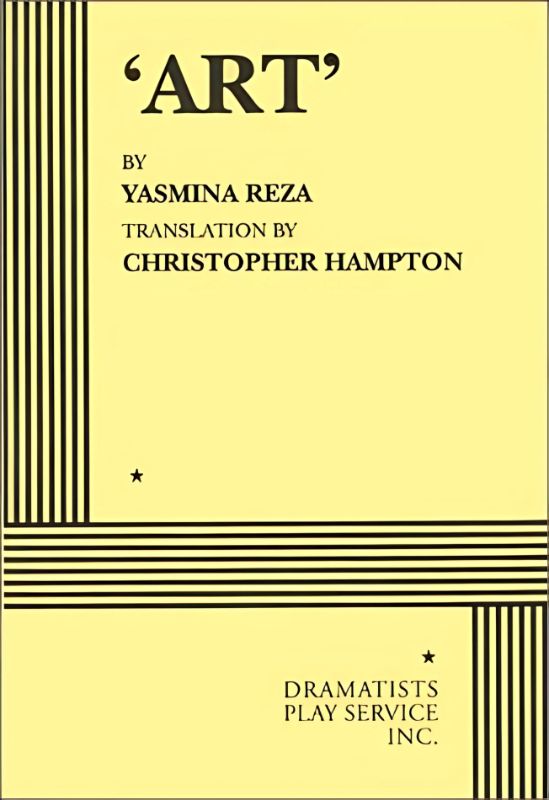
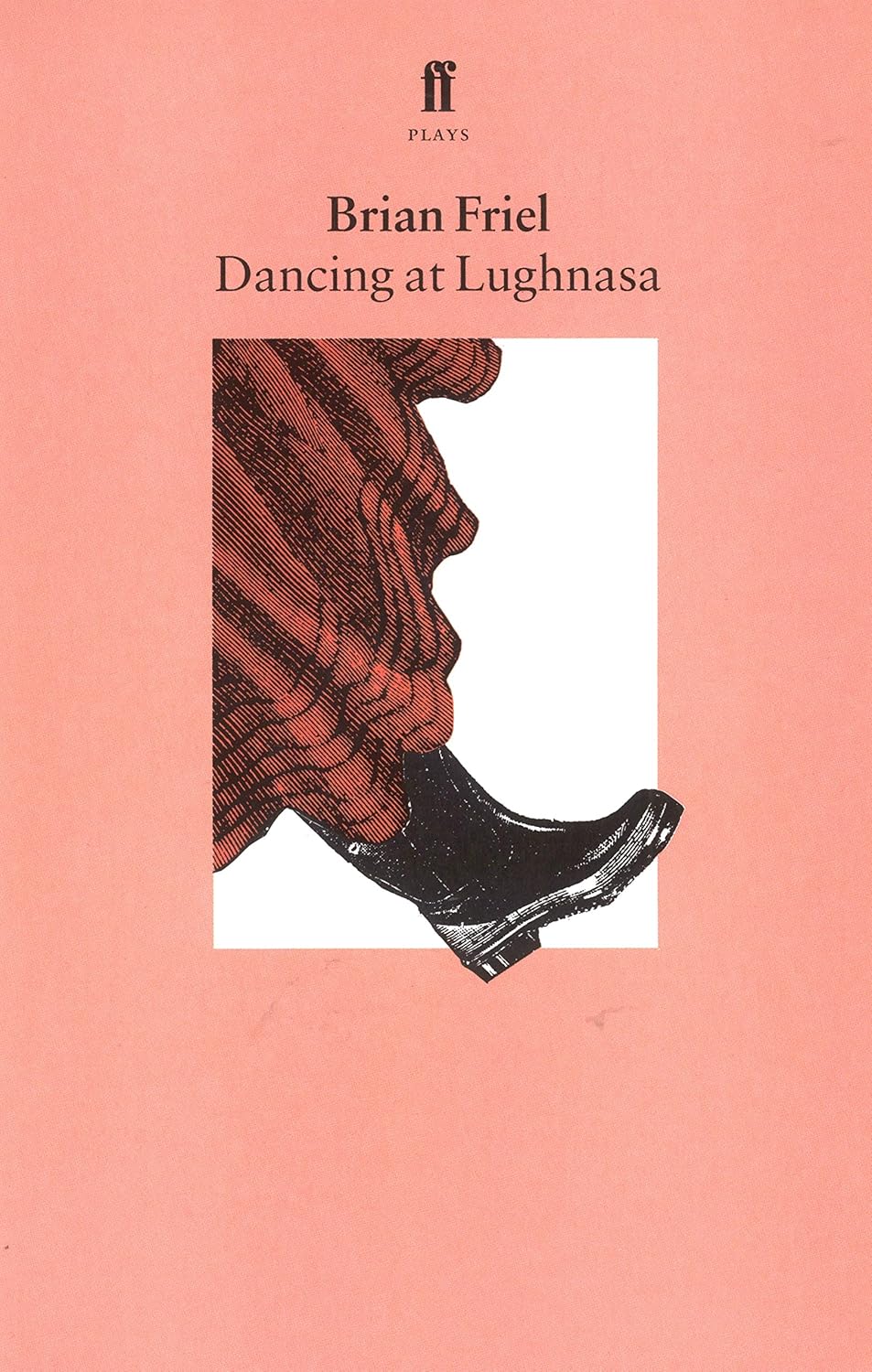
Leave a Reply